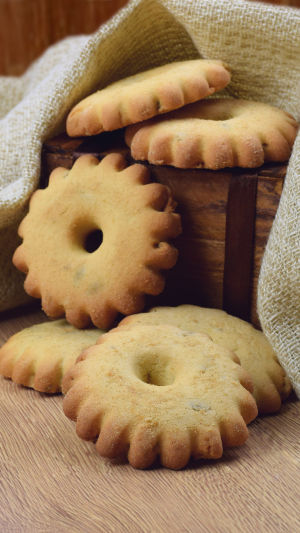Biscuits are delightful snacks that add joy to daily lives.
In the world of biscuits, a wide variety of styles and flavors compete for our attention. Biscuits are mainly made from wheat flour, with optional additions of sugar, oil, and other ingredients.
They go through a process involving mixing, shaping, and baking or frying to create crispy and delicious treats.
The processes for making biscuits vary, resulting in a diverse array of biscuit types. The market offers several main categories of biscuits.
Each biscuit has its unique characteristics.
1. Crisp Biscuits: These biscuits are made primarily from wheat flour, sugar, and oil. Additional ingredients such as leavening agents are added. They are made through a cold powder mixing process, shaping, and baking.
Crisp biscuits have a textured surface and a porous interior, giving them their characteristic crunchy or crispy texture.
2. Tough Biscuits: Made from wheat flour, sugar (or sugar-free alternatives), and oil, tough biscuits also incorporate leavening agents and improvers. They are prepared through a hot powder mixing process, followed by shaping and baking.
These biscuits have a smooth appearance with a concave flower pattern and a dense, crunchy texture.
3. Fermented Biscuits: Fermented biscuits primarily consist of wheat flour, fat, and yeast as the leavening agent. Various auxiliary ingredients are added.
The preparation involves adjusting the dough, fermentation, shaping, and baking. These biscuits have a fluffy or crunchy texture and a unique aroma resulting from the fermentation process.
4. Compressed Biscuits: Wheat flour, sugar, fat, and dairy products form the main ingredients of compressed biscuits.
Additional components are mixed in a cold powder process, followed by shaping, baking, crushing, and adding fats, sugars, enhancers, dried fruits, meat floss, or dairy products, resulting in compressed biscuits.
5. Cookies: Cookies are crafted from wheat flour, sugar, syrup, oil, and dairy products, with leavening agents and other auxiliary ingredients. The cold powder process involves mixing, extrusion, wire cutting, or roller printing to create cookies with three-dimensional patterns or regular ripples on the surface.
6. Sandwich Biscuits: These biscuits have a filling sandwiched between two single biscuits or within a hollow portion. Fillings can include sugar, fats, dairy products, chocolate sauce, composite sauces, jams, and more, enhancing the overall biscuit experience.
7. Wafer: Wafer primarily uses wheat flour (or glutinous rice flour), starch, emulsifiers, bulking agents, and other auxiliary ingredients. They are made by mixing, pouring, and baking to create porous layers.
Typically, sugar, grease, or other fillings are added between the layers to create two-layer or multi-layer wafer biscuits.
8. Egg Rolls: Egg rolls are crafted from wheat flour, sugar, eggs, and optional fats. Leavening agents, improvers, and other auxiliaries may be included. They are made by mixing, pouring, or dipping the batter, and then rolling it into cylindrical shapes before baking.
9. Pancakes: Pancakes are made using wheat flour (sometimes with glutinous rice flour or starch), sugar, eggs, and optionally fats. Leavening agents, improvers, and other auxiliaries may be added. The batter is adjusted and poured or dipped before being fried or baked into pancakes.
These are the most common types of biscuits and their preparation methods available in the market today. While they come in various styles and flavors, the quest for deliciousness remains a constant.





